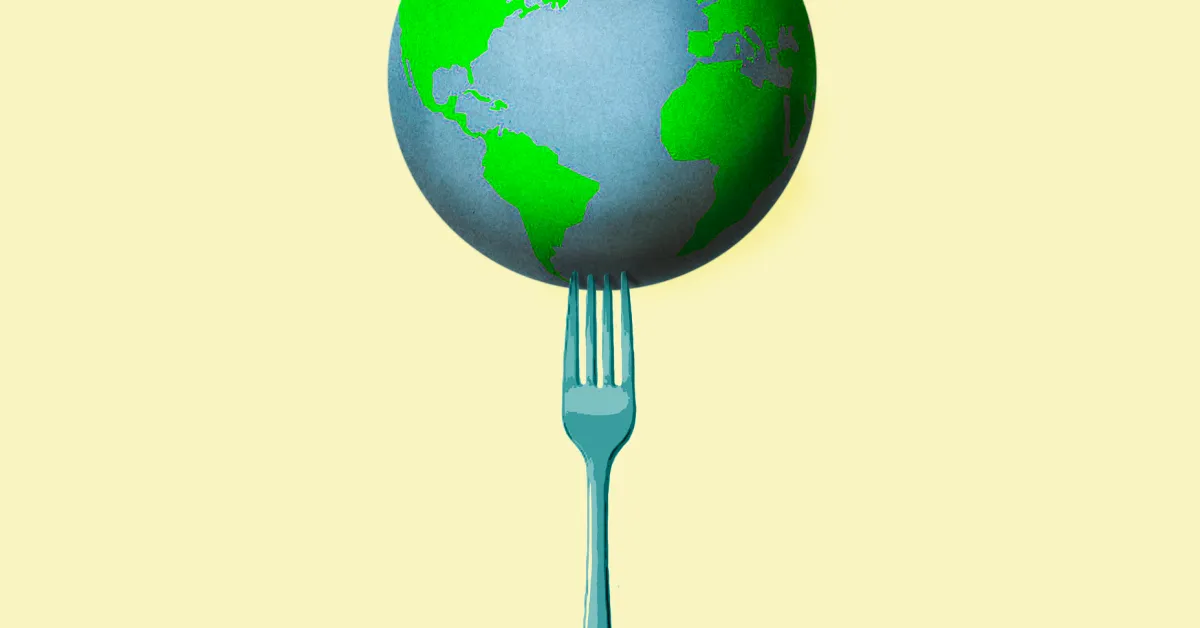
Food is the difference between life and death. Everyone knows this. But it’s also the difference between stability and instability, union and division, and peace and war.
I have had a front-row seat to some of the greatest humanitarian crises of our time—from Yemen and Syria, to Afghanistan and Gaza—and this has been true, time and time again.
I’ve sat face to face with mothers who’ve told me, “My son didn’t want to join ISIS or Al Qaeda, but he had to feed his little girl.” These are families who don’t want to leave home, but will do what any mother or father would to feed their children, even if it means risking everything.
[time-brightcove not-tgx=”true”]
The power of food is simple to understand; yet the systems around it are anything but. When famine strikes, we rightfully react. Emergency aid is activated. Millions of dollars are deployed. But time and again, the cycle starts afresh. We fail because we treat famine in isolation from its interconnected crises.
We have enough funds, and enough food, to feed the world. The real reason humanitarian efforts keep failing is because decision-makers profit from short-term solutions at the cost of addressing the root causes of inequality and food insecurity.
Food’s power to cause, and prevent, war
When the World Food Programme received the Nobel Peace Prize in 2020, it was honoured in a year marked by severe global conflicts and crises, including the pandemic. In announcing its decision, the Committee hailed the scale of aid that had been provided the previous year, with our team having helped close to 100 million people across 88 countries. But it explicitly cited the wider impact of our approach in shifting perceptions of famine and hunger – moving from treating crises as disasters in need of immediate relief, to understanding access to food as a powerful tool in both conflict prevention and resolution.
Because whether in the form of vegetables, rice, or bread, our team was providing the weapons of peace required to start reconciliation within communities that creates stability across nations. The reason food is effective at establishing peace is the same reason leaders use food as a weapon of control to weaken majorities or deplete autonomy: because food is powerful.
But food’s strength comes from hunger being more powerful. Hunger drives humanity to all kinds of extremes and the worst kinds of horror.
Food shortages brought on by one war can trigger conflict on the other side of the planet. Every day we see traumatic images of people risking their lives for the chance of a better one, whether that’s in Gaza, Sudan, or Yemen. Most of us cannot imagine the extremities that would drive them to do so, but the truth is they are often risking everything to feed themselves and their families. These are people entering direct conflict zones for the chance of a single sack of flour, not returning.
Today, we have unprecedented amounts of global wealth and technological capability. Despite catastrophic USAID cuts, the past few years have seen organizations raise record-breaking funds to combat global hunger. In many respects, you could say we have succeeded in our humanitarian efforts.
Just 200 years ago, aproximately 80% of people lived in extreme poverty. Today that number is below 10%. Last year, the World Food Programme delivered over 16 billion rations to people suffering from starvation. We have built global systems capable of lifting billions out of hardship.
But tell that to the 10% who go to bed hungry every night, the 800 million people we continue to fail. Despite extraordinary progress, global food security is getting worse.
Enduring conflicts, coupled with unrelenting climate shocks, mean that aid organizations may never achieve their ultimate purpose of making themselves obsolete. This is not a result of insufficient supply; we produce more food per person than at any point in human history. Our failure is man-made, created by a lack of access, understanding, and political will.
The strategic failures of short-term relief
From my years leading the World Food Programme, I have witnessed some of the most devastating humanitarian crises of our time and seen first-hand how much more effective it is to address root causes than provide short-term relief.
Take the impact of the Russia-Ukraine conflict, which severely affected nations around the globe due to the sharp increase in the costs of food and fertilizer.
Nations like Niger were particularly vulnerable. With most of the population living in urban areas, limited access to arable land and water becomes a major driver of food insecurity. In addition to responding to the immediate effects of famine, the WFP’s work has prioritised emergency preparedness, with an emphasis on ecological restoration to help protect climate-sensitive livelihoods and support smallholder farmers.
It meant that while the shocks were certainly felt, 80% of the villages we supported through resilience programs required no aid because of war in Europe. That alone amounted to 500,000 people protected because of a strategy that treated food access as more than a symptom of conflict or environmental change.
There is no doubt that reaching those who need immediate relief is of the highest importance, but it is not a long-term solution. If we simply continue to distribute food, we will be doing that for the next thousand years. Whereas when we implement resilience programs, build water wells and rehabilitate land, the amount of aid needed drops significantly and for the long-term.
This investment in food systems, sustainable infrastructure, and agriculture, is not only a moral imperative, but an economic one.
Support for displaced people at the U.S. border costs thousands of dollars per week for each child, but just $1 to $2 a week to fund the resilience programs across Latin America that enable families to grow their own food. Similarly, the costs of supporting refugees that come to Germany, which took in over 1 million people over the course of the Syrian refugee crisis, came to an estimated €30 billion in 2023. From my work with the WFP, I learned that support for a Syrian in Syria costs just 50¢ a day.
In short, when people don’t have food, they move to find it. And when people move, the cost is a thousand times more.
The political willpower to address food insecurity
In order to achieve the political will power necessary to stop this cycle, we must lay out the consequences of not funding strategic international aid. Food insecurity drives migration, fuels conflict, and erodes democracy. That’s how you get through to lawmakers and taxpayers.
But too often, even our best efforts are hampered by bureaucracy. When good people are trapped in rigid systems, long-term strategies are side-lined, and technical jargon clouds both the mission and key personnel’s understanding of it.
This issue is exemplified at events like COP30. It’s a gathering where fossil-fuel lobbyists drown out the voices of climate-vulnerable nations, where the promises made are routinely broken, and where substantive action is sacrificed for the appearance of progress.
That’s why much of my work now is focused on the young people who will soon be at the wheel; young people who are distraught and disenchanted by national and international institutions that have let so many down.
My message to them is: be careful and stay hopeful—don’t tear down the systems that are reaching the 90%, fix them. Integrate your modern tools and use technology, connectivity, and data to clearly evidence where proven frameworks can be made stronger.
Because hunger is not just a failure of morality, it’s a failure of understanding and communication. Breaking bread is not just charity, it’s strategy—and it is our pathway to peace.
The post Why Humanitarian Efforts Keep Failing appeared first on TIME.




